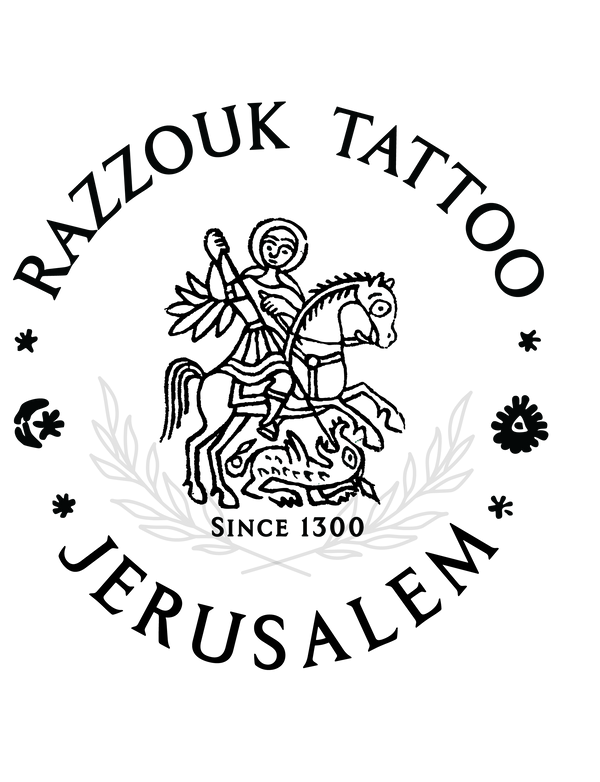About Us
Our History
Tattooing is an art that the Razzouk family brought to Palestine five centuries ago from Egypt. Initially arriving in the Holy Land as pilgrims, the family decided to stay, engaging in trade and continuing their tattooing tradition. This art, practiced by the family for over 700 years, became their livelihood as they tattooed pilgrims visiting the Holy Land.
The Razzouk ancestors used tattoos to mark Christian Copts in Egypt with a small cross on the inside of the wrist. This cross served as a symbol of faith and granted access to churches. Without it, entry could be denied. For this reason, Christians often tattooed their children with the cross from a very young age, sometimes as early as a few months old, identifying them as Copts.
Wassim Razzouk
Today, Wassim Razzouk, the 27th generation of the family, continues this incredible tradition. Read on to learn more about the rich history of the Razzouk Tattoo shop and its role in offering tattoos to visitors in the Old City of Jerusalem.
“My grandfather, Jacob Razzouk (known as Hagop or "the tattooist"), was the first tattoo artist in the region to use an electric tattoo machine powered by a car battery. He was also the first to use color in tattoos. Many artists learned from him, and he has been mentioned in numerous books and magazines discussing the history of tattooing, particularly religious and Christian tattoos.
Jacob learned the art from his father, who had also been taught by his father, continuing a lineage of expertise. Our ancestors brought wooden hand-carved stamps from Egypt that served as stencils for religious designs inspired by biblical motifs such as the crucifixion, the ascension, and the Madonna. Pilgrims would queue to be tattooed with crosses or other designs of their choice, often including the date as a certification of their pilgrimage to the Holy Land and as a keepsake. Many pilgrims returned in subsequent years to add new dates to their tattoos.
My father, Anton Razzouk, recalls a man who visited Palestine annually for decades, bringing groups of pilgrims from Egypt. Each year, he and his group would receive tattoos, and the man himself accumulated numerous tattooed dates on his arms. Another cherished story is about the Emperor of Ethiopia, who was tattooed by Jacob in the 1930s. The Emperor insisted on being tattooed by the original artist from the Razzouk family. A more recent story involves an Armenian-American doctor who invited my father to the USA to create an authentic Razzouk tattoo. Despite the cost exceeding that of a hundred tattoos, the doctor valued the authenticity and heritage.
My father taught me this sacred art, just as his father taught him. Today, I am proud to continue the tradition alongside my two sons, ensuring that this heritage remains alive in our family for many generations to come.”
